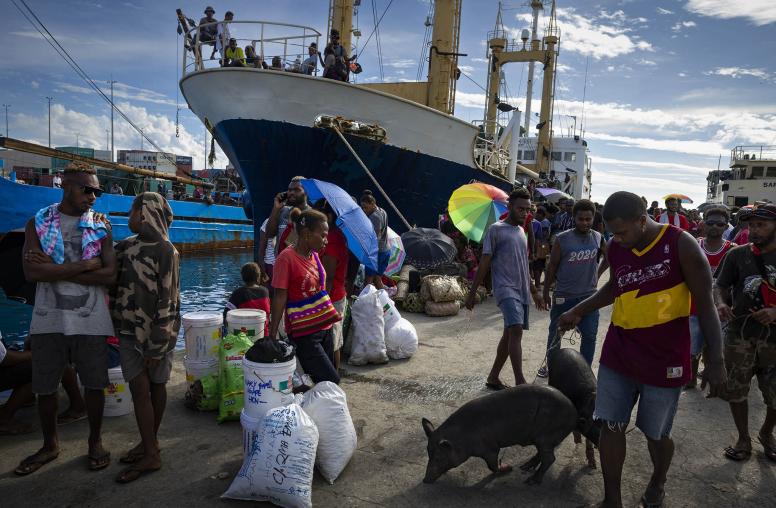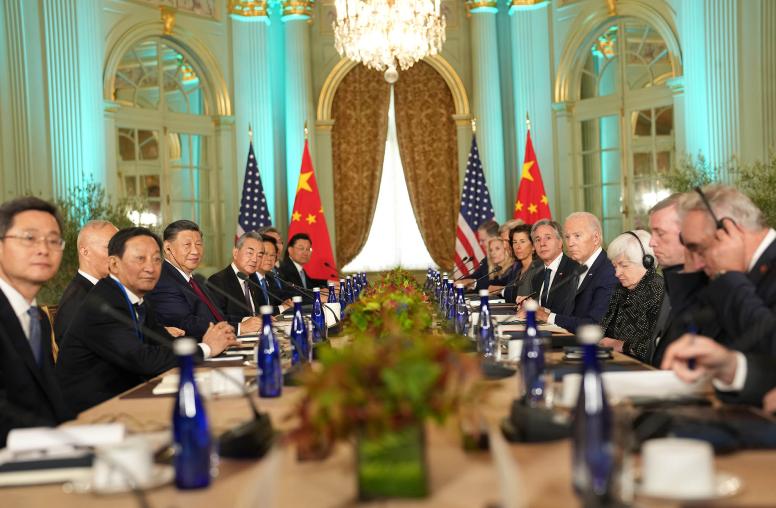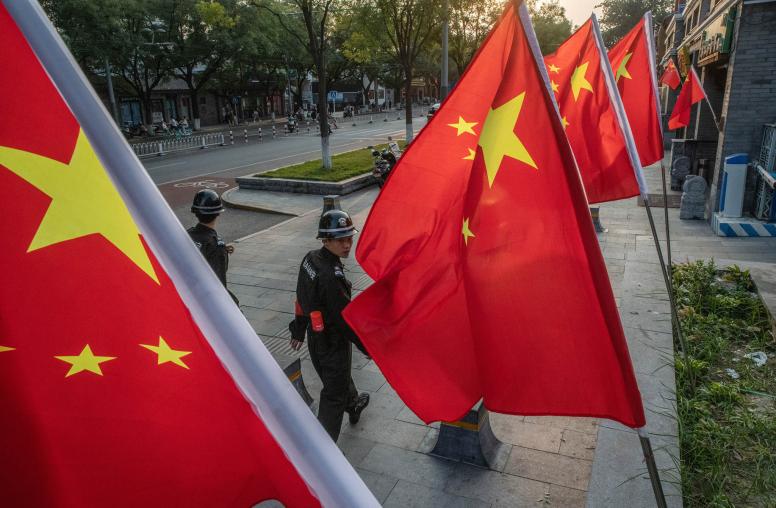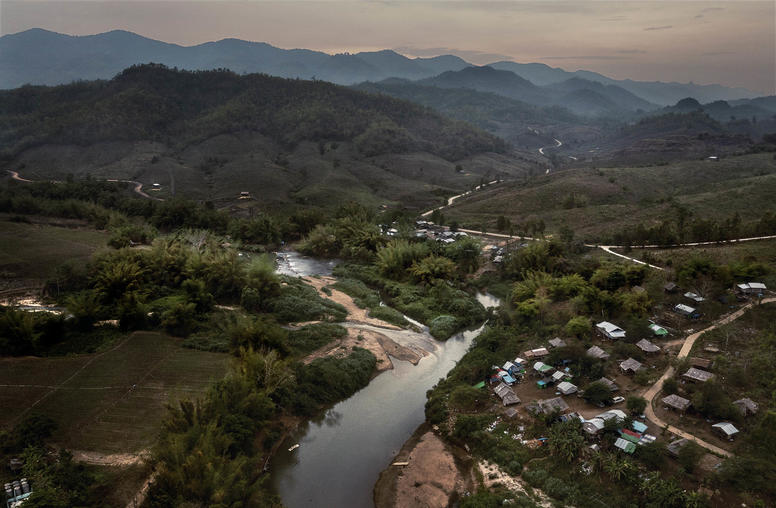Ahead of Biden-Xi Meeting, U.S. Administration Keeps Focus on the Indo-Pacific
With an eye on China, security and stability top agenda on Blinken and Austin’s visits to region.
With the world’s attention on the Middle East, U.S. leaders highlighted a continued focus on the Indo-Pacific over the last two weeks heading into the Asia-Pacific Economic Cooperation (APEC) summit in San Francisco.
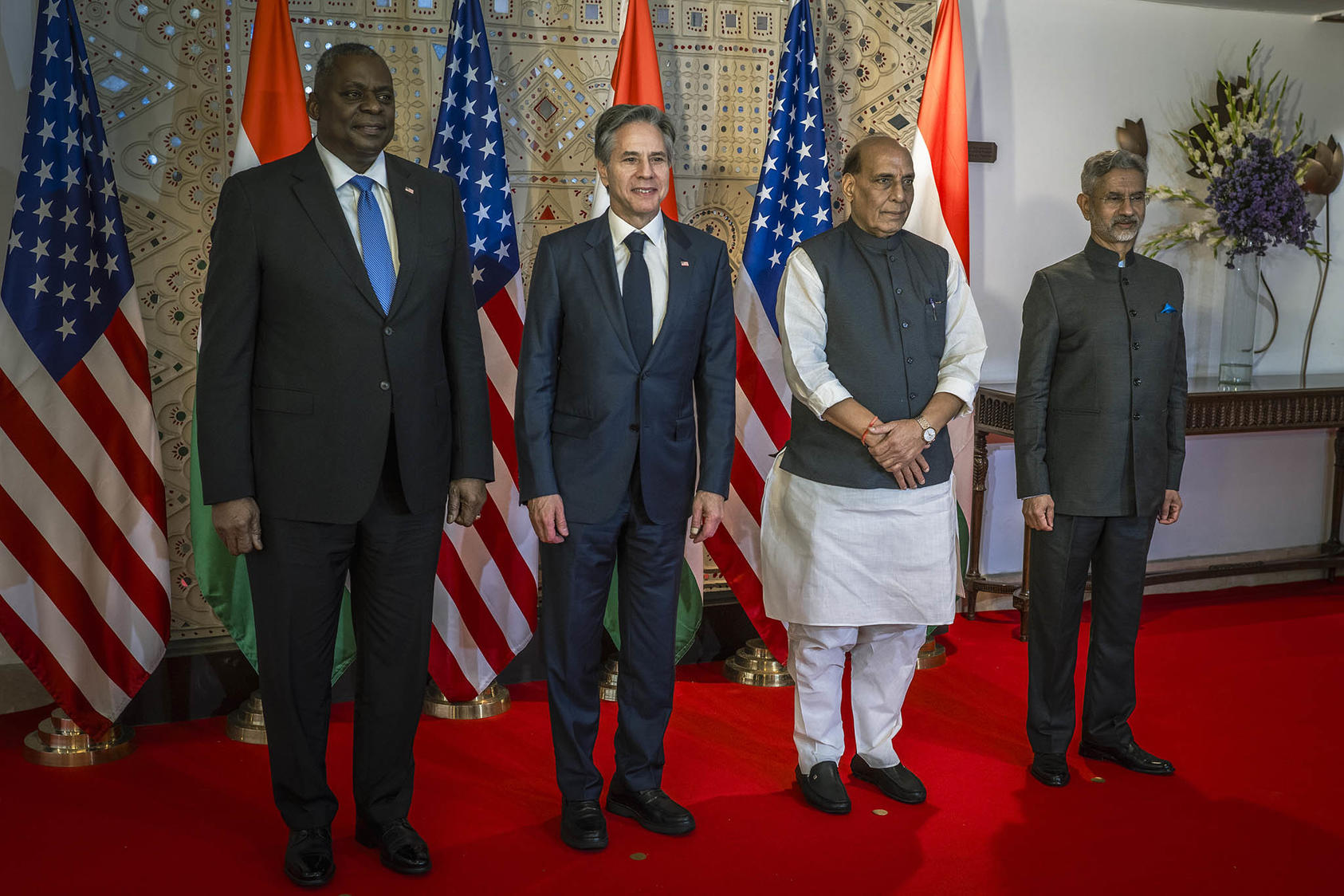
Indonesian President Joko Widodo visited the White House on November 13, and Secretary of State Antony Blinken and Secretary of Defense Lloyd Austin made synchronized swings through the region, overlapping in India for the fifth annual U.S.-India 2+2 Ministerial Dialogue on November 10. Meanwhile, U.S. President Joe Biden is expected to meet Chinese President Xi Jinping on the sidelines of the APEC meeting on November 15.
USIP’s Vikram Singh and Frank Aum discuss the key takeaways from Blinken’s and Austin’s trips.
What are the key takeaways from the 2+2 Ministerial in India?
Singh: Coming just a month after the Hamas terrorist attacks on Israel triggered renewed war in the Middle East, these extended visits signal to Asian allies and partners that the United States remains focused on the Indo-Pacific and on the concerns of Asian partners.
For India specifically, the 2+2 Ministerial Dialogue showcased the historic level of policy alignment between India and the United States. That alignment centers on concerns about China and terrorism issues and hopes for economic prosperity rooted in critical technology and innovation.
India has taken a position aligned with the United States in the wake of the Hamas terrorist attacks against Israel that triggered the devastating war in Gaza. In their joint statement, Blinken and Austin joined their Indian counterparts — Foreign Minister Subrahmanyam Jaishankar and Defense Minister Rajnath Singh — in reenforcing the ambitious agenda set by President Biden and Indian Prime Minister Narendra Modi during Modi’s state visit to Washington in June. Both sides are intent on managing any differences and highlighting areas of strategic convergence. Three things stand out.
First, the 2+2 is mainly a strategic forum with security and technology at the top of a very broad bilateral agenda. The defense partnership took center stage, with the leaders emphasizing the deal to co-produce General Electric fighter jet engines and highlighted that they expect to complete a “security of supply” arrangement to allow each country to request priority deliveries from their partner’s industry for critical defense items. They also announced coproduction of Stryker armored vehicles in India and offered support to the INDUS-X initiative, which seeks to stimulate investment in technologies related to national security and defense. The leaders of the U.S. Defense Innovation Unit and India’s iDEX (Innovations for Defence Excellence) units held a major INDUS-X investor event and announced an education series for startups and venture firms in India.
Second, ad hoc “mini-lateral” forums seem here to stay, with the United States and India driving a lot of engagement outside of traditional regional architecture to advance specific objectives. The leaders reiterated that the I2U2 between India, Israel, the United Arab Emirates and the United States, as well as the India-Middle East Economic Corridor, are critical economic initiatives. These come on top of the Quad (Australia, Japan, India and the United States) and Indo-Pacific Economic Framework Asia Pacific. Together, all of these show that both nations want to grow their cooperation in regions that see a lot of Chinese business and investment. Indeed, the United States and India are still focusing on the Middle East as a zone of cooperation, not just an area of security concern (although they also announced that India joined the Combined Maritime Force located in Bahrain).
Finally, as both countries enter an election season, their leaders seem keen to reenforce stability in the Indo-Pacific. With Europe and the Middle East embroiled in the Ukraine war and the war against Hamas, respectively, concern about a crisis in Asia runs high. The 2+2 Ministerial previewed a surge of engagement through the new year, with a likely visit by the U.S. deputy national security advisor to India and a possible early 2024 Quad leaders meeting in India.
Where do South Korea and Japan stand on the war in Ukraine, the war in Gaza and China vis-à-vis the United States?
Aum: South Korea and Japan are strongly aligned with the United States on many of the global challenges discussed during Blinken’s and Austin’s trips to the region. The two countries have condemned Hamas’ attacks against Israel, expressed deep concern about the rise in civilian casualties caused by the conflict and called for a humanitarian pause to support the delivery of humanitarian aid in Gaza.
They also believe that Russia’s aggression against Ukraine was a violation of international laws and have resolved to work with the United States to end the war and restore peace in Ukraine. The involvement of the two Koreas in Ukraine — North Korea is providing munitions and military equipment to Russia while South Korea is supplying humanitarian assistance and indirect military assistance to Ukraine — underscores the war’s far-reaching impact on the Korean Peninsula.
Regarding China, both South Korea and Japan are seeking ways, with Japan taking a strong leadership role, to enhance the rules-based international order and reduce China’s malign behavior while still developing healthy, mature relations with the country given their deep economic ties. In this regard, they have enhanced engagement with partners in Europe, like NATO, as well as the United States. In the past, Beijing has retaliated economically against Seoul and Tokyo for perceived offenses in the security domain.
Recent U.S. efforts to limit China’s access to critical technologies such as advanced semiconductors have worried South Korean and Japanese companies that have significant investments and economic relations with China. China, recognizing the growing U.S.-Japan-South Korea security relationship and the limits of economic retaliation, has agreed to its own trilateral summit with South Korea and Japan at the “earliest convenient time,” with Seoul targeting late December.
During the recent trip by Blinken and Austin, the United States, South Korea and Japan agreed to launch real-time information sharing on North Korean missile launches and more “systematic” trilateral military drills in the coming months.
